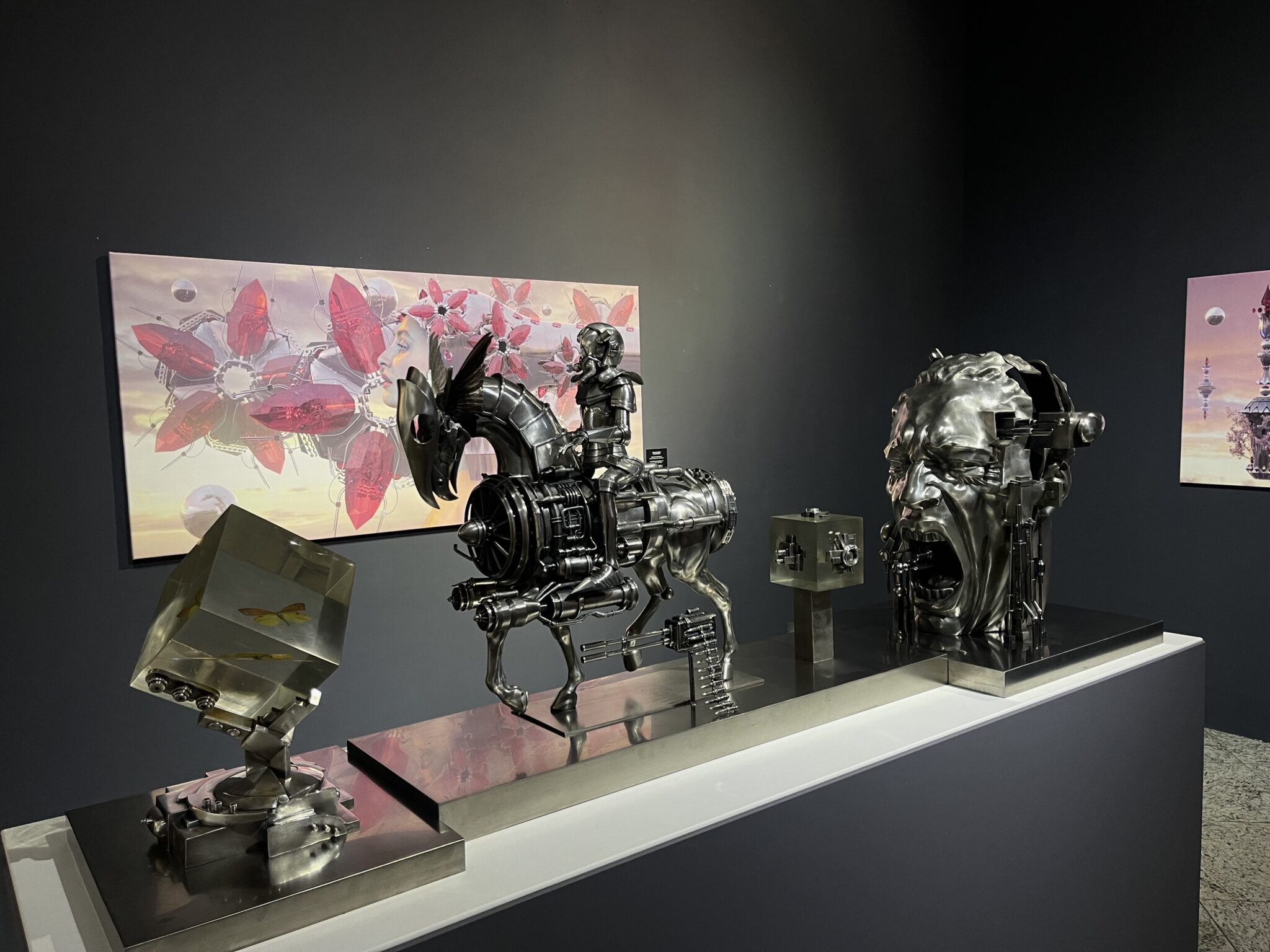WNAM REPORT: Unus Safardiar’s stunning exhibition, “The Second Ascent,” opened in the National Museum of Kazakhstan in Astana on Sept. 19 and will run till Nov. 17. The British artist, originally from Samarkand, Uzbekistan, has already seen his monumental sculptures, dedicated to the transformation of the world, displayed in cities like London, New York, St. Petersburg and Novosibirsk. Safardiar boldly combines various materials and techniques in his works, with his signature style marked by the use of transparent elements.The exhibition features 15 sculptures and installations, each of which explores the central theme — the rise and fall of human civilization. Through large-scale video canvases and contemporary sculptures crafted with diverse techniques, the artist conveys the complexity and multidimensional nature of this process. One of the most striking installations is a wax sculpture titled “White” and “Black,” which immediately captures the attention of visitors. These two pieces symbolize contrasting events and concepts that accompany a person throughout life — from birth to death. Just like the fragile material of wax, all of this can melt away and disappear at the moment when a person’s life comes to an end.
Safardiar frequently uses the image of a horse in his works as a symbol of civilization and progress. In the sculpture “Two Worlds,” a person is depicted as a rider on a futuristic horse. Above him, in suspended acrylic cubes, float images of an embryo and wings. This piece portrays the modern human, who, over time, becomes hardened, detached and armored. Yet inside, there remains the vulnerable core of a child, represented by the embryo, fragile and sensitive to change. The wings represent not only dreams and spirituality but also morality. The sculpture communicates the idea that a person constantly balances between two worlds — the material and the spiritual — from birth until death.
A multimedia installation with cosmic motifs, featuring Safardiar’s daughter as the central figure, draws particular attention. The video canvases depict her aging process, from an 11-year-old girl to an adult woman, surrounded by shifting futuristic forms that symbolize the changing nature of the world.“My works reflect the infinite transformation of the world. I want viewers to see how old forms fade away, giving rise to new ones, creating something truly unique,” shared Safardiar during the exhibition’s opening.


